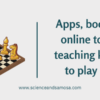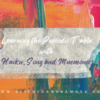How To Make a Simple Lava Lamp At Home

The best way to get your child interested in science is by doing SCIENCE stuff with them…
This is the second post by me under ‘Fun with Science’ section
Have you seen a Lava Lamp. Is it not wonderful to see large colored bubbles sinking, rising and transforming. If you go to a shop to buy the same it will come at around Thousand bucks. The better the look and feel, higher the price. If I tell you, you can make this at home with your kitchen stuff (temporary one), won’t you be excited. All the more it’s a simple kitchen experiment which you can do with your kids. It’s easy to do, safe, and looks very cool.
Let’s get started
Take an empty glass and to it add water with food color added to it.
To this now add vegetable oil. Add approximately double the amount of oil to water.
Closely watch to see how two immiscible liquids behave.
Let the two layers settle and now add to it a pack of Eno salt and see the magic unfold.
It will look much beautiful, if you place a flash light underneath it.
Ingredients Used:
Plain water, Cooking Oil, Food color and Eno salt
How does it work
A lava lamp works because of three different scientific principles namely, density, polarity and Gas formation.
Density is defined as mass/volume. If we measure equal volume of water and oil, we will find that the water is heavier than the same amount of oil. This is because water molecules are packed more tightly compared to oil. Since water is more dense than oil, it will stay at the bottom of the container and oil will stay on top.
If it was only about density, water and oil would have mixed slowly. Water molecules are polar and oil molecules non polar. Water molecules have an irregular electrical charge that attracts other atoms. The two hydrogen atoms are positively charged, whereas the oxygen, is negatively charged. On the other hand, oil molecules are made of long chains of hydrocarbons—strings of carbon atoms and they share equal electrons between the carbon and hydrogen atoms. As a result molecules don’t have opposite positive and negative ends. Since oil and water are different from each other, they won’t blend.
Eno is an antacid, which contains a mixture of sodium bicarbonate, citric acid and sodium carbonate. Upon the addition of water to Eno, the citric acid will start to dissociate and becomes reactive. It will then convert the carbonates into Carbon dioxide and water. These gas bubbles would stick to the colored water droplets. The combination of water and gas is less dense than the oil, and as a result would rise through the oil, to the top of the glass. As it reaches the top, the gas bubbles would pop and escape into the air, and the dense water would sink back to the bottom again. The reaction will continue till the antacid gets used up. When the chemical reaction between eno and water gets over, the bubbling stops, and would be left with bottle with two layers of immiscible solution.
Go ahead….make yourself a Lava Lamp at home. Kids would love it…….











wow awesome idea.. It looks very beautiful.. Definitely will try this
Can’t wait till my son grow up to do this fun activity. Going to try it by myself soon
This seems so intrestin I M gonna definitely try Dis out very soon.. Keep up d good work
I am gonna try this for sure…and hey for how long does this stay
A packet of Eno will last for around 5 minutes. You can add it again and again
Learning by way of experiments is very interesting. It is the best way to learn. So cool!!
Wow..suprb fun activity……n quite interesting …affordable option for decor too….
This seems to be a fun and engaging activity. I’m going to be trying this with my daughter, I guarantee she will love it. Thanks for sharing!
This is a awesome idea …. Looks beautiful… Is it ok to use other colours or mix 2-3 colours …
Anything is fine. Its your choice
Wow looks so magical! Will try!
Such an amazing hack this is, will surely give it a try! ⚡️
Wow this looks like an awesome DIY, i am gonna do this for my little one and i am sure he will love it!!!
AllThatsmom
Super cool hack I shall definitely try this